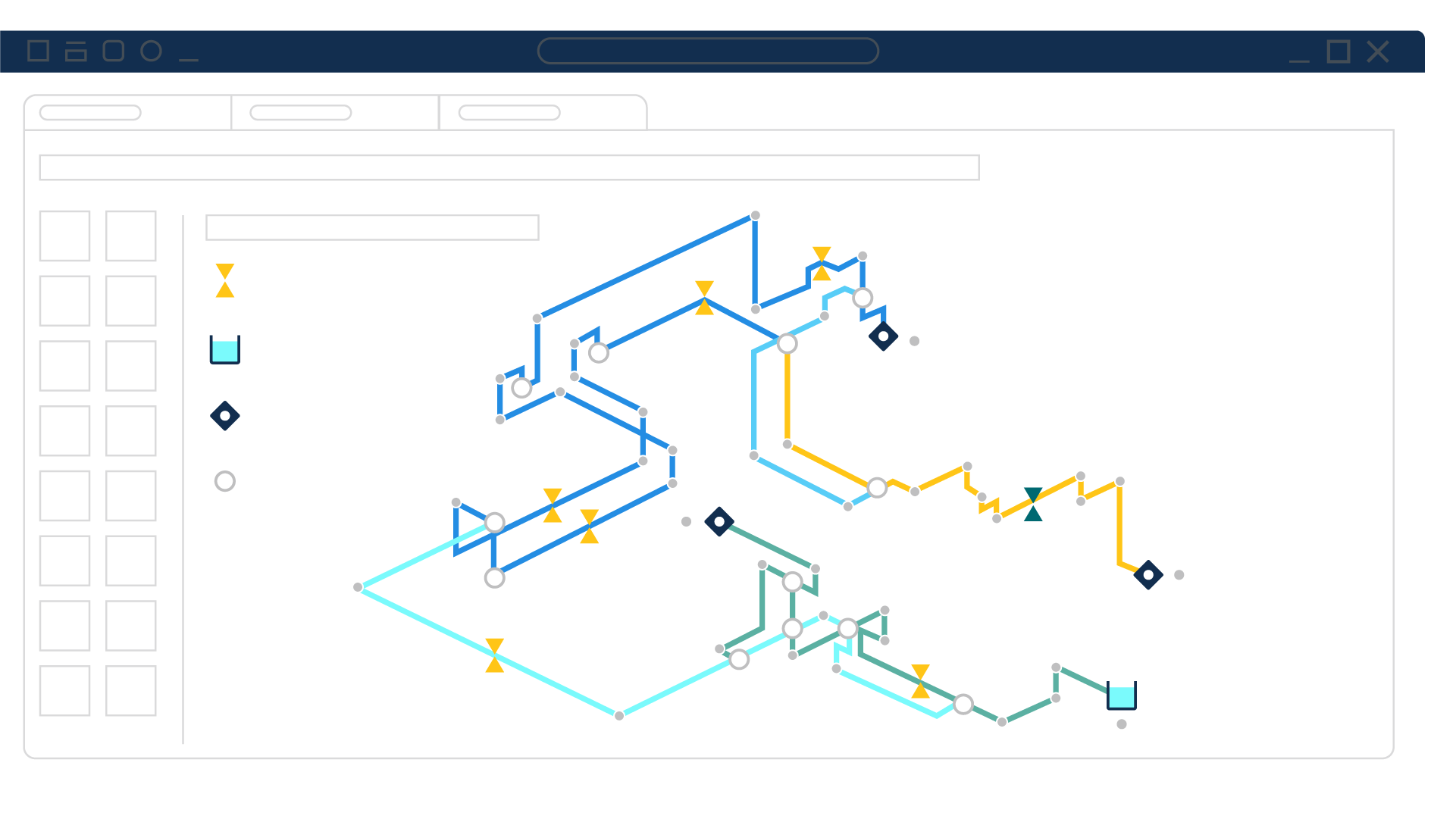Calculate pressure surges and size equipment to safeguard your system.
Track multiple “What-If“ operating cases within one file and compare multiple transient scenarios in seconds.
Animate events and export clear graphs and data for quick insights.

Predict pressure surges, flows, and forces during water hammer events with an MOC-based transient solver.
Capture real equipment behavior during trips, reversals, startups, and control actions.
Evaluate and size surge-control equipment such as surge tanks, gas accumulators, and air/vacuum breaker valves, to keep pressures within limits.
Build, manage, and share models efficiently—and connect results to stress analysis.
Clearly communicate transient behavior.
Use verified, extensible databases for liquid transients.
Start from a consistent steady-state and enforce allowable conditions.
Analyze water hammer in slurries where solids change wave speed, damping, and friction.
Quantify positive-displacement pump pulsations and avoid acoustic resonance.

We have answers! Here are some of the most common questions we hear from engineers and companies evaluating Impulse. Topics include cavitation and column separation, liquid transient modeling, pump transients, non-Newtonian fluids, partially filled pipes, operating limits, steady-state differences from Fathom, and fluid property databases.
Yes, Impulse models transient cavitation using the Discrete Vapor Cavity Model (DVCM) and Discrete Gas Cavity Model (DGCM).
No, Impulse models transients in liquid systems only. However, xStream can model gas & steam transients.
Pumps can be modeled with a prescribed speed profile or with speed calculated from pump inertia; positive displacement pump transients (periodic flow, startup, shutdown) are supported.
Yes, Power Law, Herschel-Bulkley, and Bingham Plastic models are available, plus Duffy and Brecht & Heller methods for pulp-and-paper applications.
Yes, as of Impulse 11, pipe filling is now a valuable feature for engineers analyzing surge and bubbles in startup systems.
Yes—define min/max operating pressures as design alerts (with cross-plots to pressure profiles) and assign elevation profiles to individual pipes; control valves are supported.
Impulse uses the same steady-state method but only for water hammer initialization. It does not analyze heat transfer, and has no pump/system curve graphing.
Because they share the same code-base and interface, you can easily transition your Fathom model to Impulse simply by opening the Fathom file in Impulse and saving it.
Standard Fluids and NIST REFPROP are included; the optional Chempak add-on provides up to ~700 fluids with mixing capabilities.
Calculate steady-state hydraulic pressure drop and pipe flow distribution in liquid and low-velocity gas piping and ducting systems.
Steady-State Compressible Flow Modeling. Calculate pressure drop and flow distribution in gas and steam systems
dynamic simulation tool for high-speed, acoustic transients that occur in steam and gas piping systems.
Robust chemical process simulation software designed to meet the diverse needs of engineers who design, troubleshoot, and innovate.